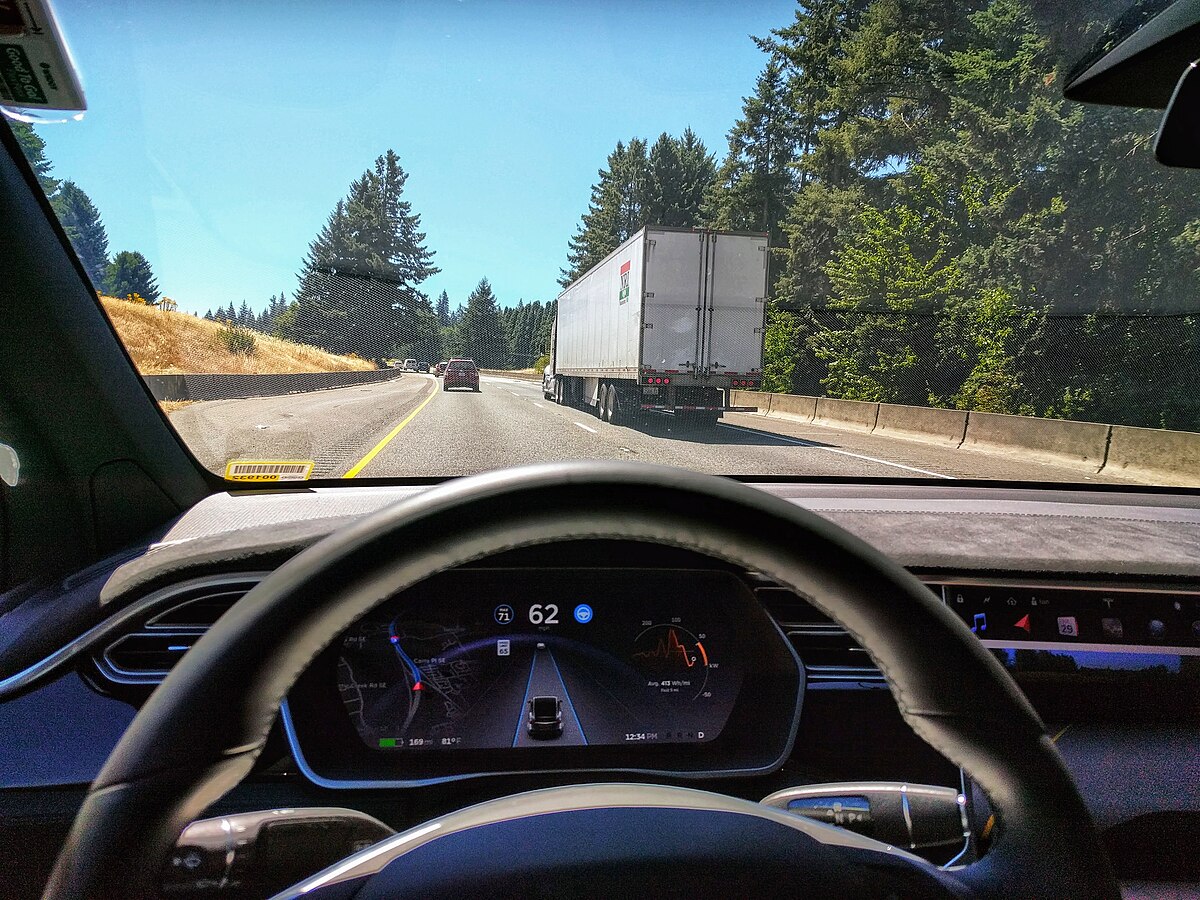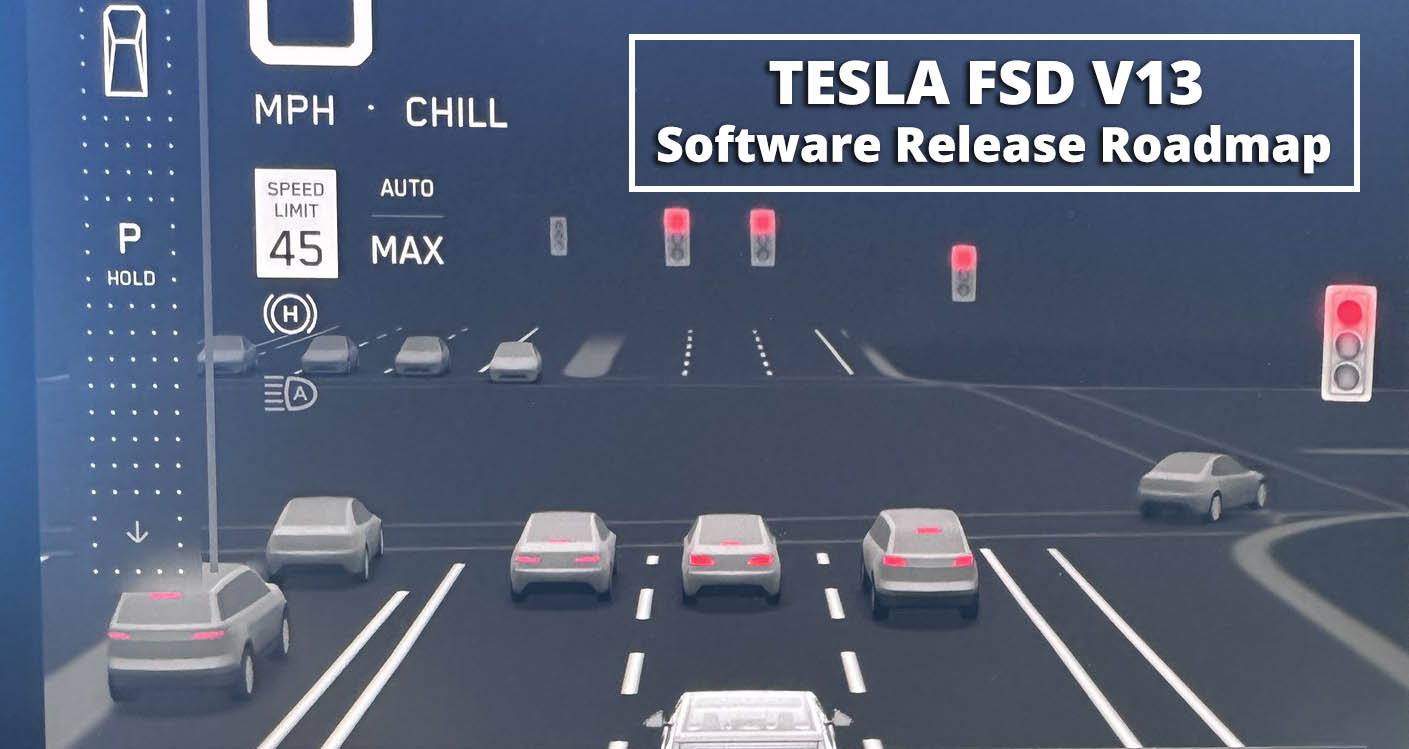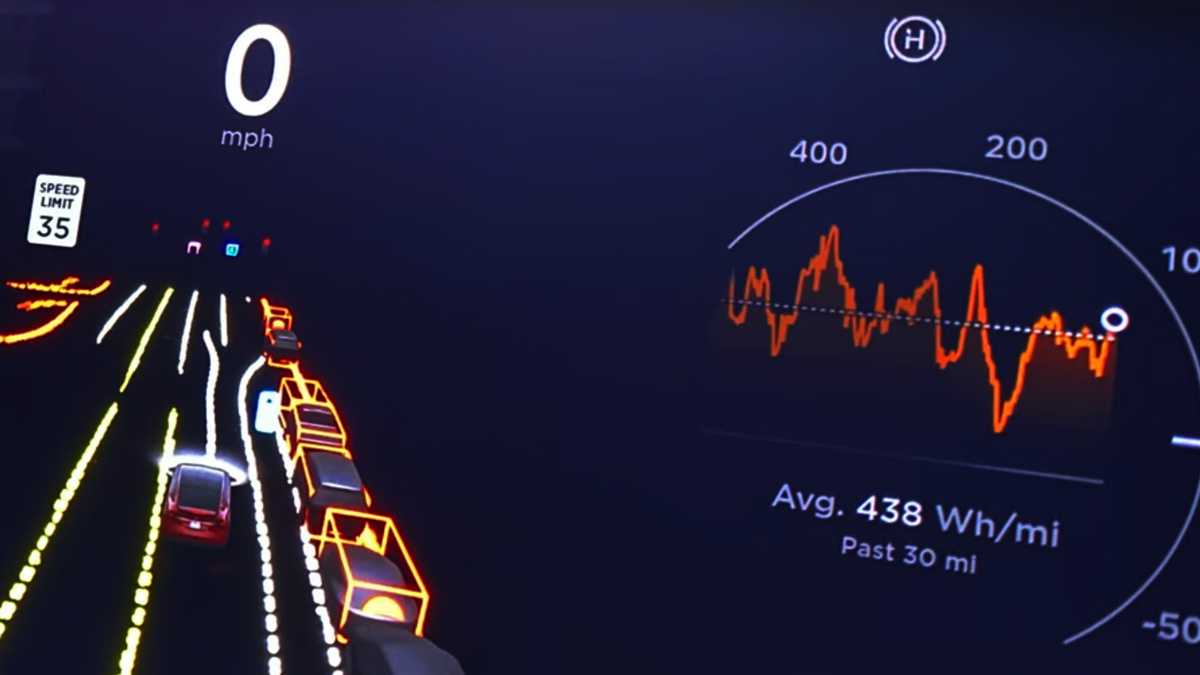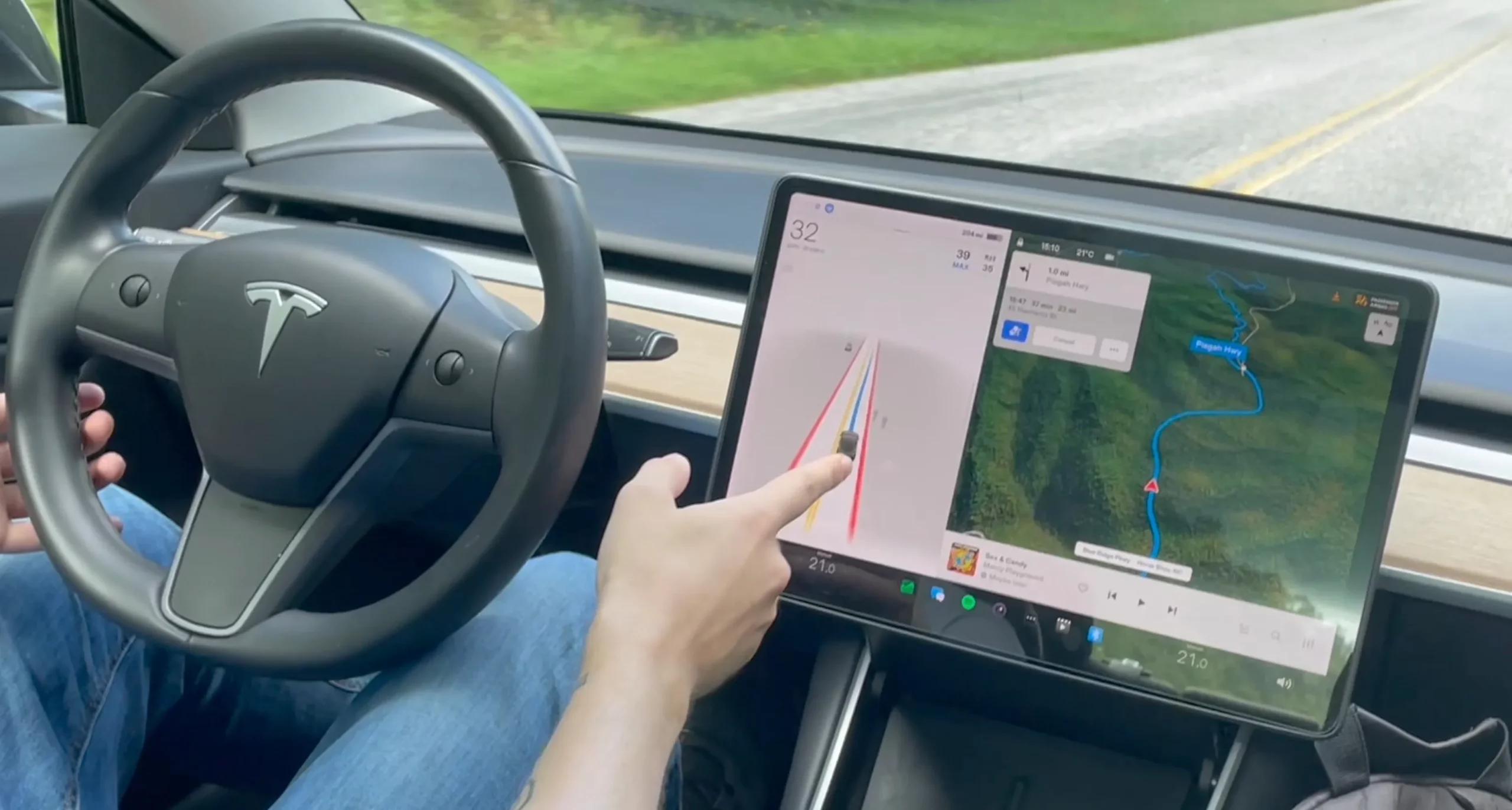- The Tesla Full Self-Driving system is a Level 2 advanced assistance system, not full autonomy.
- Its evolution has been marked by improvements in hardware, software, and legal controversies.
- Functions range from highway driving to urban environments, always under human supervision.
- The debate about its safety, price, and ethics continues among experts, users, and regulators.

Discuss autonomous driving is talking about Tesla and, specifically, of his Full Self-Driving (FSD) system. This system has been one of the most controversial, media-intensive, and advanced in terms of driver assistance. With promises of full autonomy, continuous updates, and legal controversies, Tesla's FSD has transformed both the public perception of smart cars and the automotive industry.
In this article we are going to see what Tesla Full Self-Driving consists of, how it has evolved, what problems and challenges it faces, and to what extent it is truly safe and revolutionary. If you're looking for transparent, detailed, and up-to-date information—free from unnecessary technical jargon and with a realistic approach—you've come to the right place.
What is Tesla Full Self-Driving?
Tesla Full Self-Driving, popularly known as FSD, is the most advanced driver assistance technology offered by Tesla, and represents the ultimate example of its commitment to autonomous vehicles. Although the name suggests the car can drive itself, the reality is different: Legally, FSD is a Level 2 assistance according to the SAE classification, not fully autonomous driving. This means that the driver is always required to pay attention and be ready to take control at any time.
Although its name indicates autonomy, Tesla highlights that The driver must always be attentive and supervise the vehicle, even with FSD activated. Only in recent years, following several controversies, has the brand begun calling the package 'Full Self-Driving (Supervised)'.
The origins: from Autopilot to FSD
Tesla's journey to autonomy began in 2013, when Elon Musk began to talk publicly about systems that could assist drivers, inspired by airplane autopilots.
Between 2014 and 2016, The Autopilot system was the big news in the Tesla Model S and Model X, incorporating features such as automatic parking and Summon (removing the car from a parking space). The initial collaboration was with Mobileye, but this was discontinued due to differences over safety limits.
The transition to Full Self-Driving It involved several stages, with constantly evolving hardware (HW2, HW2.5, HW3, HW4, and soon HW5), improving processors and sensors. In parallel, the software was developed, allowing for driving on urban roads and recognition of traffic lights and stop signs.
Evolution of FSD functionalities and hardware
The main difference between FSD and Autopilot and Enhanced Autopilot Its aspiration is to achieve complete autonomy: that the vehicle can circulate on highways, in urban environments and in parking maneuvers without human intervention.
Tesla has updated hardware and software over time, including:
- HW1 (2014): basic sensors and processor, with limited functions.
- HW2 (2016): more cameras and sensors, an important step towards urban autonomy.
- HW2.5 (2017): improvements in processor and redundant systems.
- HW3 (2019): Tesla's own computer, greater decision-making power.
- HW4 (2023): higher resolution cameras and more robust hardware, initially only in emulation mode with HW3 software.
- HW5 (AI5, 2026): planned for 2026, it will be ten times more powerful than HW4.
FSD combines cameras (Tesla Vision), radar in previous versions and processors designed by Tesla, managed by a neural network that continuously learns from the millions of kilometers traveled around the world.
FSD software and betas
One of Tesla's highlights has been the progressive deployment in “beta” format, something unusual in the automotive industry. Since October 2020, early adopters—including select employees and testers—began receiving experimental versions of FSD in urban environments.
The strategy has been controversial, Because each update involves risks and generates media attention, the features that have been introduced and refined include:
- Highway Driving with Navigate on Autopilot
- Recognizing and responding to traffic lights and stop signs
- Autosteer on urban streets
- Automatic lane change
- Advanced Summon (“Smart Summon”)
- Improved automatic parking
Recent versions, such as 12 and 13, They are based almost exclusively on machine learning models, largely eliminating traditional code and relying on neural networks trained with real data.
How does FSD work? Technological principles
Tesla's technological base focuses on an architecture based on cameras and advanced artificial vision (Tesla Vision), Leaving aside sensors such as LIDAR or detailed 3D maps, unlike competitors such as Waymo or Cruise.
The system uses eight exterior cameras, ultrasonic sensors (on pre-2023 models) and Tesla-designed processors, Managed by a neural network that learns from patterns in millions of real-life driving data points. The company boasts the world's largest fleet of data collection for autonomous driving.
However, The strategy of relying only on cameras and clumsy maps has been criticized, Some consider that the lack of LIDAR and accurate maps limits the scope towards level 5 of real autonomy.

FSD's Star Features: This Is Tesla's Assisted Driving
Let's review the most relevant features that FSD offers in its different packages, Since access may vary depending on country, model and hardware:
| Function | Autopilot | Enhanced Autopilot (EAP) | Full Self-Driving (FSD) |
|---|---|---|---|
| Adaptive cruise control | Yes | Yes | Yes |
| Autosteer (keep in lane) | Yes | Yes | Yes |
| Navigate on Autopilot | No | Yes | Yes |
| Automatic lane change | No | Yes | Yes |
| Car park | No | Yes | Yes |
| Summon | No | Yes | Yes |
| Smart Summons | No | Yes | Yes |
| Recognition of traffic signs | No | No | Yes |
| Autosteer in the city | No | No | Yes |
FSD's biggest innovation compared to previous versions It is its ability to drive autonomously on conventional streets, including curves, roundabout management, traffic lights and stop signs.
Safety results, data, and controversies
The perception of security of the FSD is subject to diverse opinions. The most enthusiastic owners consider it to offer greater safety on highways and long journeys, but independent reports sometimes show contradictory data.
Tesla claims its systems have reduced accident rates by 40%, according to NHTSA reports, but some studies question this data and compare it with other metrics, noting that the analyses often fail to consider key variables, such as road type and driver experience.
Statistics show that the accident rate with Autopilot or FSD ranges from one accident every 6 to 8 million miles, compared to one in 1,2 million in conventional driving, although these figures may be skewed by the profile of the users and environments in which the system is used.
There is concern that the use of FSD, which requires human supervision, may generate a false sense of security, causing distractions and potential accidents. Response to system failures is still not always rapid, and critical situations further complicate regaining control.
Recurring criticisms and expert positions
The scientific and road safety community is quite critical of Tesla for releasing beta features without sufficient independent validation, and the lack of robust systems to monitor driver attention. Several agencies have already rated FSD and Autopilot below other systems in terms of safety and prevention. These are some of the main criticisms:
- Misleading expectations: The name and functions may suggest a complete autonomy that does not exist.
- Driver Supervision: Tesla uses torque sensors in the steering wheel and internal cameras, but not as rigorously as other manufacturers. There are cases in which these systems can be fooled.
- Obstacle detection failures and emergency situations: Incidents have been reported in which the system failed to brake in response to obstacles or emergency vehicles, with serious consequences.
- Unpredictable reactions and phantom braking: Problems such as unexpected braking or unforeseen deviations have been the subject of investigations and recalls.
In recent years, Tesla has updated software and issued recalls to improve these aspects, although experts believe fundamental safety improvements are still pending.

Legality, lawsuits and regulatory issues
Tesla has faced several legal issues and lawsuits over misleading advertising and accidents related to Autopilot and FSD. Some courts have ruled against Tesla, requiring the brand to clarify the actual capabilities and limitations of its systems, and to include clearer warnings in the interface.
Authorities, such as the NHTSA, have launched official investigations and have even requested the temporary suspension of certain features in some models, as well as demands improvements in driver monitoring and transparency of crash data.
Tesla collects a wealth of driving data across its fleet, that feed and train their AI models. However, transparency about the use of this data and privacy policies has been criticized by consumer organizations and data protection experts.
The future of FSD and competition
Although Tesla leads in volume of vehicles with advanced features, Competition in safety and precision is advancing rapidly. Companies like Waymo or Cruise implement systems with TO DEAL, HD maps and more controlled deployments in specific cities.
The future of FSD will depend on several factors:
- The development of HW5 and the expansion of the Robotaxi fleet.
- The return to non-interventionist autonomy, with regulatory compliance.
- Demonstrate, through data and evidence, that your system is secure and reliable.
- Adapt to regulations in different countries, especially Europe and China.
Ethical and social implications
The arrival of autonomous systems raises unprecedented ethical and legal dilemmas, such as accident liability, data protection, and road safety. Launching beta features under real-life conditions also generates debate about appropriate regulation.
These issues will influence the future development, regulation, and social acceptance of autonomous driving. Tesla, in its commitment to innovation, faces the need to balance progress and safety, transparency and accountability.
After this analysis, it is clear that Tesla Full Self-Driving represents a significant advancement in technology, but also faces substantial challenges in safety, regulation, and public perception. Full autonomy is still under construction, and oversight, regulation, and ethics will be key to ensuring its integration is safe and beneficial for all.
Editor specialized in technology and internet issues with more than ten years of experience in different digital media. I have worked as an editor and content creator for e-commerce, communication, online marketing and advertising companies. I have also written on economics, finance and other sectors websites. My work is also my passion. Now, through my articles in Tecnobits, I try to explore all the news and new opportunities that the world of technology offers us every day to improve our lives.

